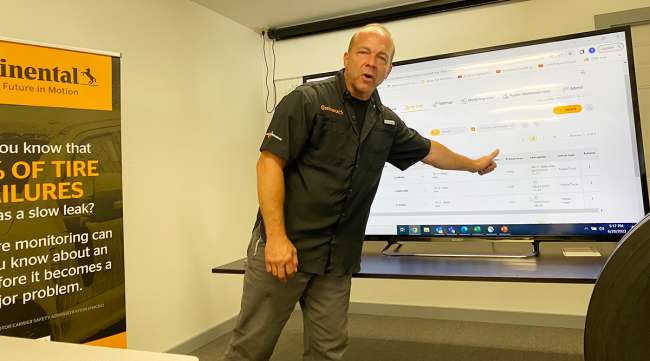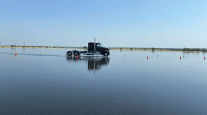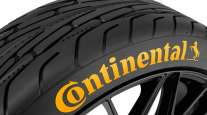Staff Reporter
How Continental Is Evolving Into Complete Tire Management

[Stay on top of transportation news: Get TTNews in your inbox.]
UVALDE, Texas — While the company is known largely as a tire manufacturer, Continental stressed that the bulk of its business is technology-focused, and showcased during a recent event how the two areas are intersecting across its product portfolio.
“A lot of people, they only know Continental tires because that’s our primary aftermarket product,” said Trey Thompson, field engineering manager at Continental, during the ContiXperience event the company hosted June 20 at its proving grounds here. The event offered media a firsthand view of how Continental has evolved its service offerings in an effort to become an end-to-end integrated service provider for tires.
Central to that plan is the company’s Vision 2030 strategic business plan, which is focused on driving profitable growth through a systematic customer-centric approach. At the customer level, that means providing services for the entire life cycle of the tire, from selling the product to digital monitoring and retreading.
The ContiConnect system is the main focus of this integrated approach. The service incorporates sensors collecting data from inside the tires, which is then forwarded to an in-cabin unit. The data is then transmitted to the web portal in real time to be examined so it can send alerts and display trends.
“Continental is a technology company — a vehicle technology company,” Thompson said, noting that the tire business is less than 30% of what the company does despite tires being the main customer-facing product. “We have that technology, and we have the people and the engineers to develop these kind of products. That led us to developing a tire monitoring system specifically for commercial vehicles.” Thompson noted the company has long offered tire pressure monitoring for passenger vehicles and light trucks.
In more recent years, however, it has been branching out on the commercial side and angling to provide improved digital support, said Shaun Uys, U.S. market manager of commercial vehicle tires.
“We started only with tire offerings,” said Uys. “[What] we are moving towards is a complete solution provider [where] you can monitor your tires — you’ve got a 360-degree service that sets around it — and we are a complete integrated provider for the fleets around the tire and the tire process.”

Hayden Cardiff, co-founder and chief innovation officer of Idelic, discusses predictive analytics software and scoring driver practices. Tune in above or by going to RoadSigns.ttnews.com.
He continued, “I’ve always said there’s four pillars that sit inside our strategy. You have tires; you have the services that go around it like emergency roadside and meeting with the fleets in order to get them back and running; you’ve got retreads, which is definitely a key setting; and the new kid on the block now, that everybody is running around, is this digital solutions approach in order to have 24-7 monitoring.”
From there, Thompson stressed that proper action by fleets leads to optimal tire management, longer tire life, lower overall costs and more efficient operations. With sensor monitoring, fleets can know what is happening with a tire, such as whether it’s properly inflated.
“The goal of digital tire monitoring is to identify issues with tires before they become a major problem,” he said. “Then there has to be action on the part of the fleet or the dealer. We can only do so much. Through our systems we can monitor the tires, we can tell the fleet what’s going on with the tires, but somebody has got to do something.”
Monitoring the web portal available through the company’s product suite offers fleets visibility to help prevent major problems.
“The web portal [is] where everything happens,” Thompson said. “That’s where we’re going to generate notifications for the customer, that’s where we’re going to collect historical information so that they can go back and do a deep dive and analyze what’s going on so that they aren’t just fighting fires. All of this is necessary to get to there.”
Want more news? Listen to today's daily briefing above or go here for more info
Thompson added the notifications from the web portal can be broken down into red alerts for issues needing immediate assistance and yellow alerts for something that can become an immediate problem later. But he warned that many fleets with tire monitoring systems only react to the immediate dangers.
“A lot of fleets never move past that,” Thompson said. “They just stay in that mode where, ‘When I get a red alert, I’m going to react, but until I get a red alert I’m not going to do anything.’ Almost every one of those reds were a yellow that didn’t get addressed.”




